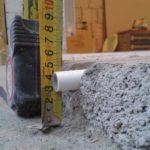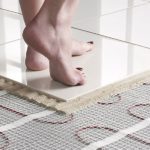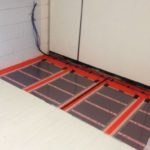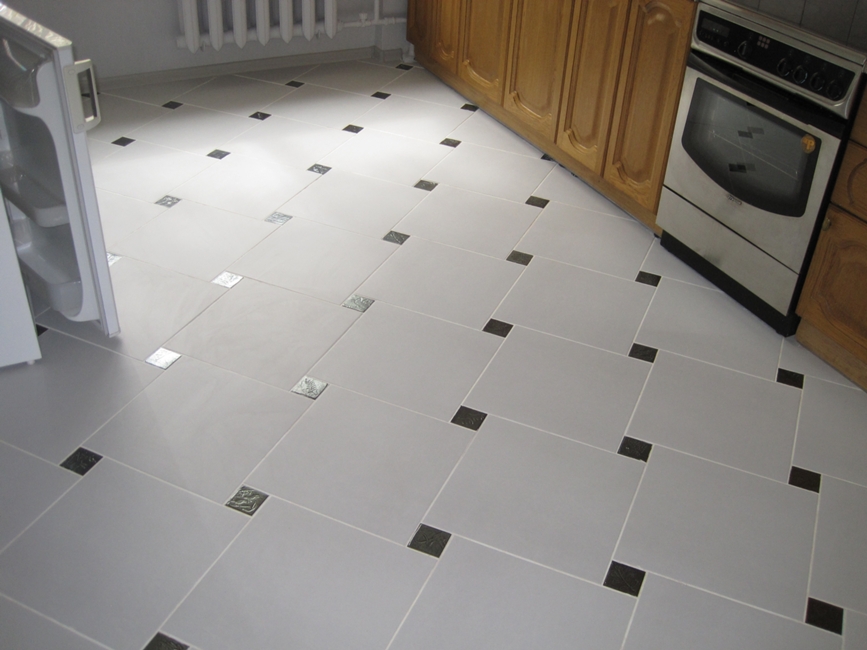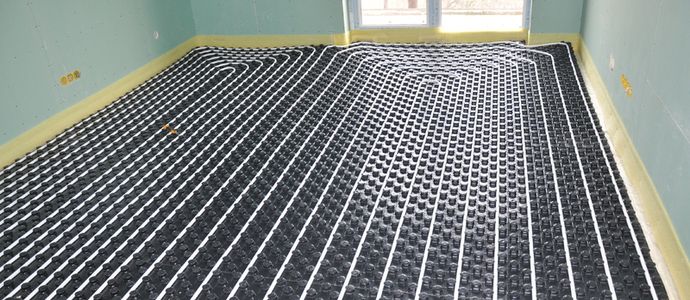Do-it-yourself warm water floor under tiles
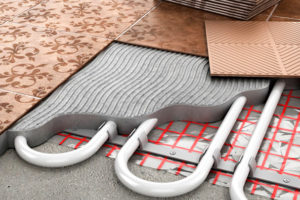 Now many people refuse to use carpet flooring, considering it a relic of the past. Moreover, modern types of ceramic tiles allow you to create the necessary coziness in the room. But in this case the floor becomes quite cold. A heated floor system can help solve this problem. Recently, this heating system has become very popular. And knowing all the nuances of the installation process, you can do it yourself. Do-it-yourself water flooring is real.
Now many people refuse to use carpet flooring, considering it a relic of the past. Moreover, modern types of ceramic tiles allow you to create the necessary coziness in the room. But in this case the floor becomes quite cold. A heated floor system can help solve this problem. Recently, this heating system has become very popular. And knowing all the nuances of the installation process, you can do it yourself. Do-it-yourself water flooring is real.
The content of the article
Mounting options
Before you begin laying the system, it is necessary to carry out preparatory work:
- Dismantle the old floor covering.
- Remove the screed.
- Level the base.
REFERENCE. If it is not possible to create a perfectly flat surface, a minimum difference in height is allowed.
After the old coating has been removed, installation can begin. Laying is carried out on a concrete base. To do this you need to make a screed. If the floor is wooden, then it is impossible to make a screed. In this case, the warm floor is laid using the laying method.
Do not forget that the pipes for the underfloor heating system are of a fairly large diameter, this can make the height in the room smaller. However, you can significantly reduce the thickness of the screed. For this, special polystyrene foam panels are used, in which grooves are cut.
REFERENCE.To maximize heat transfer, the pipes must be covered with aluminum sheets.
This option for laying the system is the most optimal for tiles.
Once the base has been prepared and all the preparatory work has been done, you can begin laying the pipes. There are two installation options:
 In a spiral. This option is suitable for large areas. The pipes are laid in a spiral in the form of turns. This method has a drawback - the supply of warm water and the return of cold water will run parallel to each other.
In a spiral. This option is suitable for large areas. The pipes are laid in a spiral in the form of turns. This method has a drawback - the supply of warm water and the return of cold water will run parallel to each other.- Parallel. A good choice for small rooms. Pipe installation is carried out in the form of a “snake”. Since the highest temperature will be at the beginning of the system, installation should begin from the coldest place in the room.
Choosing pipes
Several types of pipes are used for warm water floors. This:
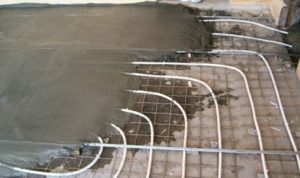 Polyethylene. They are durable, heat-resistant and resistant to maintaining their properties if the water in the system is frozen. However, such pipes straighten when heated, so they require fairly rigid fixation.
Polyethylene. They are durable, heat-resistant and resistant to maintaining their properties if the water in the system is frozen. However, such pipes straighten when heated, so they require fairly rigid fixation.- Metal-plastic. Their characteristics are not inferior to the first option. At the same time, they do not deform when heated. They are very durable and also low in cost. Therefore, this option is very popular.
- Copper. The material has very good thermal conductivity. However, copper pipes have a very high price. They also need to be isolated from the screed, since copper does not tolerate contact with alkali.
- Polypropylene. In terms of their characteristics, they are not inferior to other materials used. However, they have a very large bending radius, so they are used extremely rarely.
Laying heated floors under tiles
The installation algorithm is as follows:
- First, the base is prepared.The surface is cleaned and leveled.
- The site is being prepared for the installation of the control system - the collector. You can make a small niche in the wall or place a special cabinet on it.
- The collector is mounted in the prepared place. It is necessary to connect all the devices, pipes and taps.
- Waterproofing is laid on the prepared surface. Waterproofing material must also be laid on the lower part of the walls.
- A damper tape is laid around the perimeter of the room. It will compensate for the expansion of concrete when heating and cooling.
- Insulation and heat-reflecting material are placed on the base.
- Next, the pipes are installed using the chosen method - spiral or parallel.
- After the system is assembled, the system is checked for leaks and operability. The check should last at least 24 hours.
- If no defects were identified within 24 hours, then you need to fill the floor with screed.
- The concrete must be allowed to dry completely. This usually takes about a month.
- When the screed has dried, you can begin laying the tiles.
If you follow all the rules and choose the right and high-quality material, then even a beginner can install the system. The result of the work will be a warm and cozy room.


